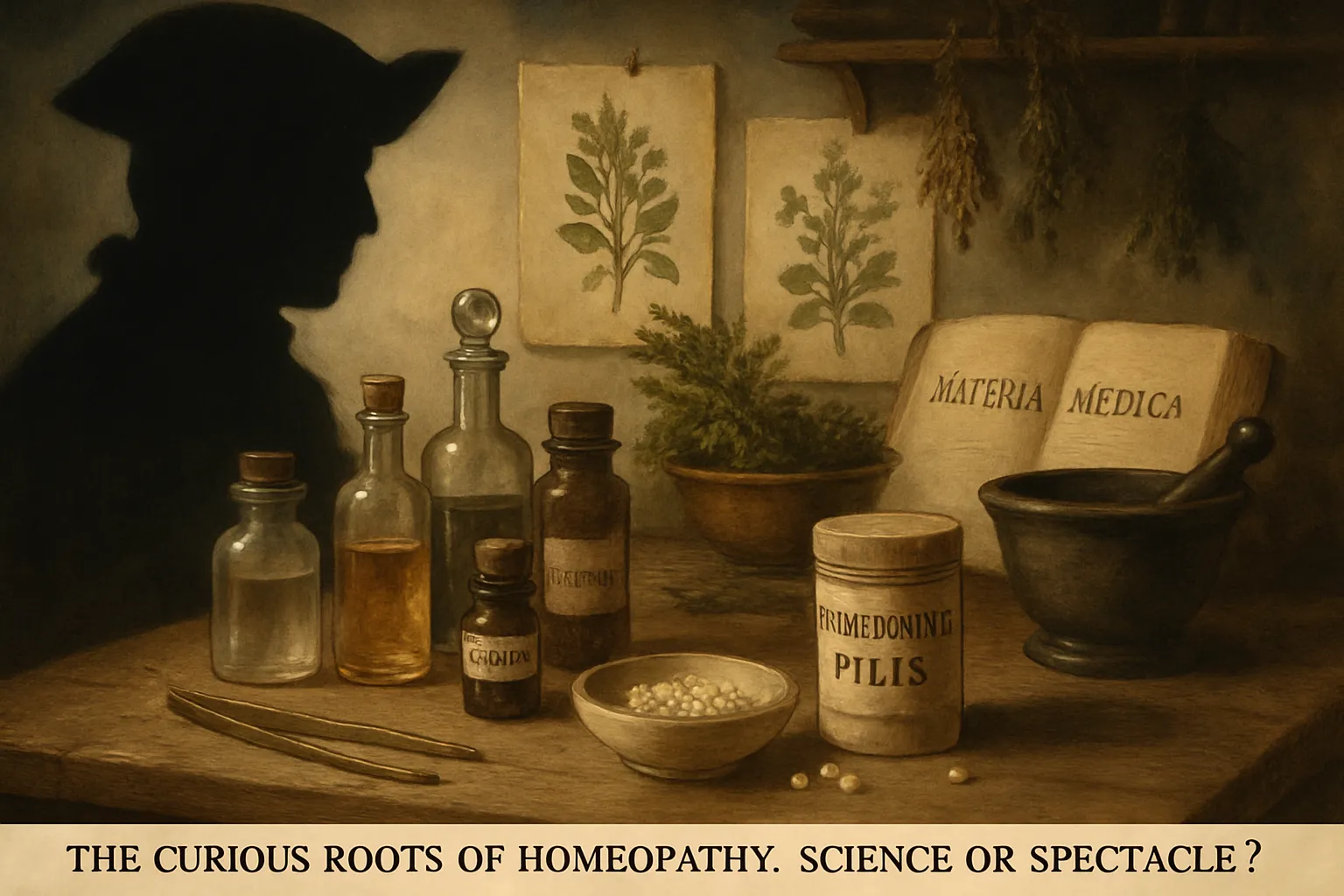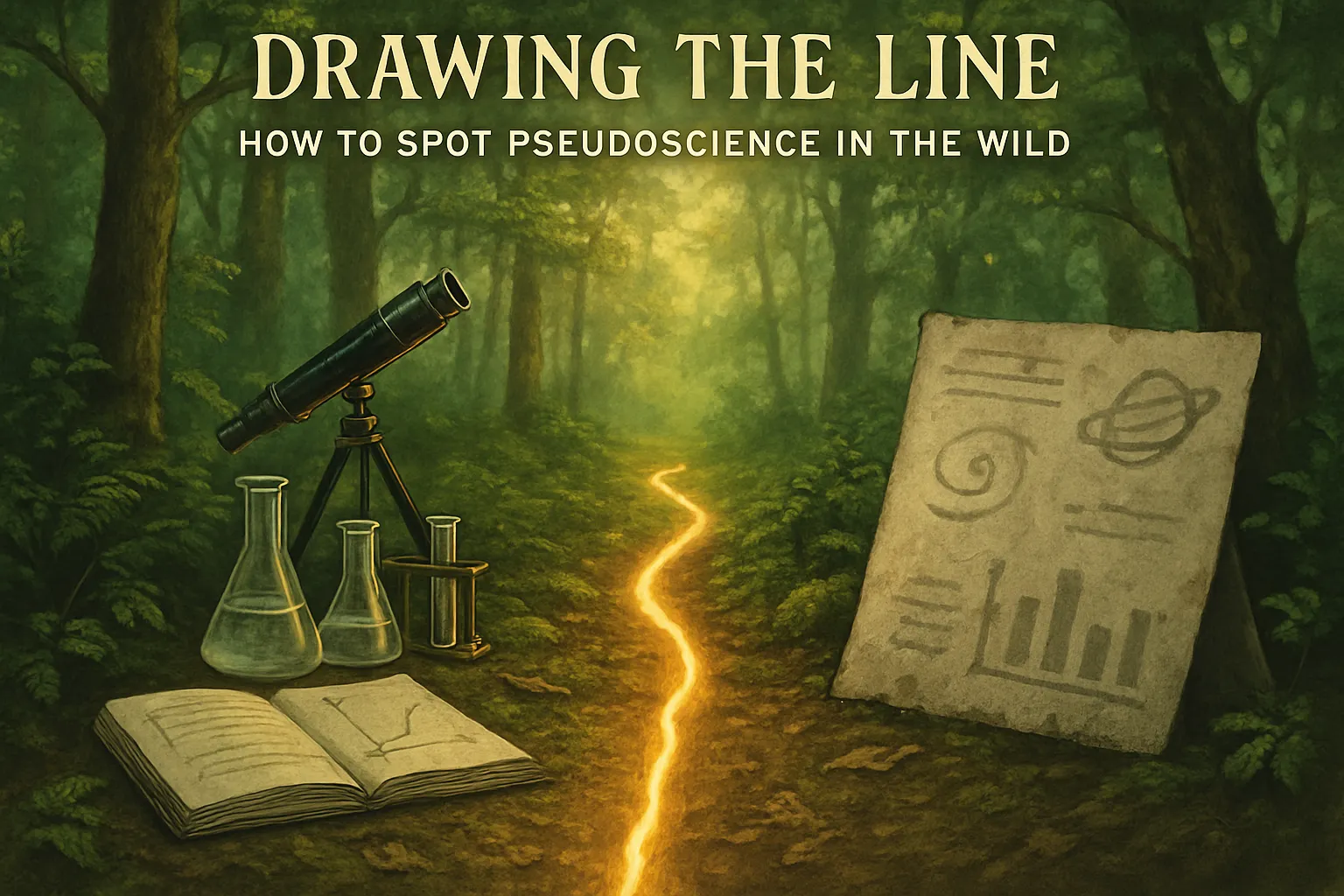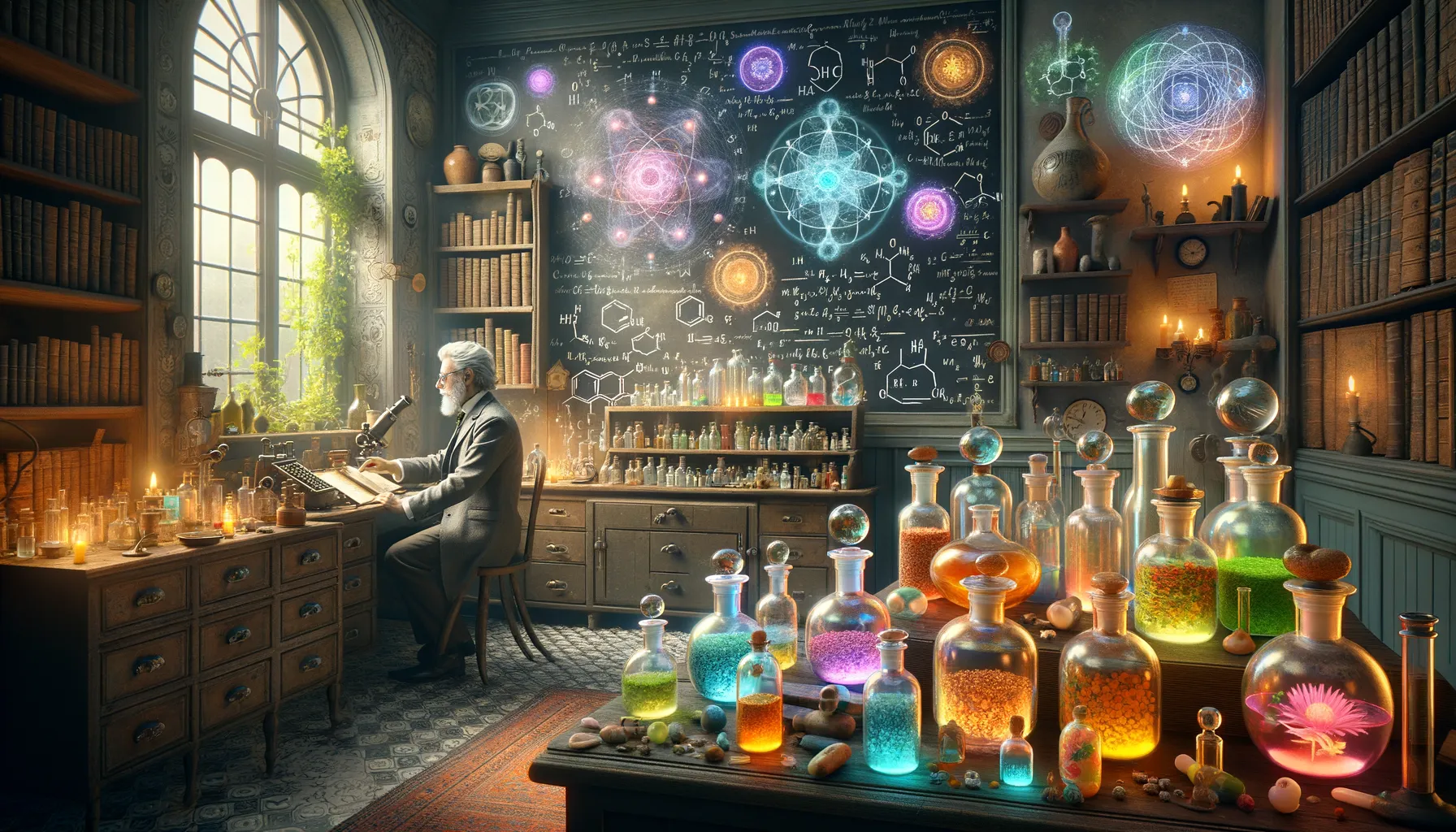I’ll never forget the day my neighbor handed me a tiny bottle of what she called a ‘miracle sleep elixir.’ The irony? She whispered she’d made it with a splash of coffee and, get this, a whole lot of distilled water. As she outlined how homeopathy works—like cures like, and dilution equals power—I realized just how tricky it can be to separate scientific reality from persuasive pseudoscience. That odd exchange got me thinking: why do some ideas catch on despite the lack of solid evidence, and what can we do to sharpen our BS detectors?
The Curious Roots of Homeopathy: Science or Spectacle?
When I look back at the history of homeopathy, I’m struck by how it began with ideas that seem to stretch logic even today. In the late 1700s, a German doctor named Samuel Hahnemann set out to change medicine forever—or so he believed. Hahnemann’s approach was radical for his time, and his theories still spark debate. He published his first articles on homeopathy in 1796, introducing two core principles that would become the foundation of this controversial practice.
The first of Hahnemann’s ideas was what he called “like cures like.” In his words:
Hahnemann's theory had two central hypotheses. First, the treatment for an ailment should be a dose of something that might cause that ailment.
For example, if a healthy person took a substance and developed symptoms similar to a disease, Hahnemann believed that same substance—given in a very small dose—could treat those symptoms in a sick person. It’s a concept that sounds almost magical, and it set homeopathy apart from other medical practices of the era.
The second principle was even more surprising: dilution increases potency. Hahnemann believed that the more you diluted a substance, the stronger its healing power became. He wrote:
And second, diluted medicines are more powerful than concentrated ones.
This is where homeopathy facts start to sound more like spectacle than science. Remedies are often diluted so many times that not a single molecule of the original ingredient remains. In fact, some homeopathic solutions are diluted beyond what chemistry would call “plausible.” To put it in perspective, a homeopathic remedy for insomnia might contain caffeine—the very thing that keeps most of us awake during late-night study sessions—but it’s been watered down to the point of virtual non-existence.
Here’s a quick look at the key principles of homeopathy:
- Like cures like: Treating symptoms with substances that produce similar symptoms in healthy people.
- Potentization: Belief that dilution and vigorous shaking (succussion) make remedies more powerful.
- Extreme dilution: Many remedies are diluted so much that not even a single molecule of the original substance is likely to remain.
Despite these unusual ideas, homeopathy caught on quickly. By the 19th century, it had spread across Europe and the United States. Hospitals and clinics dedicated to homeopathic treatments sprang up, and many respected doctors embraced the method. Yet, as scientific research advanced, the evidence began to pile up: most homeopathic remedies performed no better than placebos. Still, the practice endured, blurring the line between science and pseudoscience.
Homeopathy is often listed among classic pseudoscience examples because it mimics the appearance of science—using terms like “remedy,” “dose,” and “treatment”—but lacks the evidence and logic that true science demands. Its roots are fascinating, but they also serve as a reminder of how easily spectacle can masquerade as science.

From Popularity to Placebo: The Rise and Resilience of Pseudoscience
When I first learned about homeopathy’s origins, I was struck by how quickly it moved from a radical idea to a global phenomenon. In the late 1700s, Samuel Hahnemann’s theories—using “like to cure like” and believing that more diluted remedies were somehow stronger—sparked a movement that would last for centuries. It’s hard to imagine today, but entire hospitals were once dedicated to homeopathic treatments. Doctors, patients, and even governments invested in this approach, convinced by its promise and the hope it offered.
But as time went on, science caught up. Modern placebo effect studies and clinical trials have consistently shown that homeopathic remedies perform no better than sugar pills. As one review put it,
“Many studies have shown that homeopathy has no therapeutic effect, and homeopathic treatments often perform no better than placebos.”Despite this, homeopathy’s popularity endures. Over three hundred years, it has survived waves of skepticism and scientific scrutiny. This persistence is not unique to homeopathy—many pseudoscience examples share a similar story.
So why do so many people still cling to practices that science has largely debunked? The answer, I’ve come to realize, lies in the complex relationship between science vs pseudoscience. Pseudoscience thrives because it looks and sounds like real science. It borrows the language of research, uses technical jargon, and sometimes even publishes in journals that mimic scientific ones. For someone seeking relief or hope, it can be hard to tell the difference.
- Tradition and social momentum: Homeopathy is often passed down through families or communities. When a belief is woven into the fabric of daily life, it gains a kind of authority that evidence alone can’t easily shake.
- Personal experience: If someone feels better after taking a remedy—even if it’s just the placebo effect—they’re likely to credit the treatment, not chance or natural recovery.
- Desire for control: In the face of illness, people want to feel empowered. Pseudoscientific practices offer a sense of agency, even if the science doesn’t support them.
I’ve noticed that the resilience of pseudoscience is also fueled by a deep human need for certainty and comfort. When mainstream medicine can’t provide clear answers, the allure of alternative explanations grows. And because pseudoscience can be cloaked in scientific-sounding language, it feels plausible—even when it isn’t.
The story of homeopathy is a powerful reminder that popularity is not proof. Even when multiple studies show that a treatment is no better than a placebo, tradition, hope, and the appearance of science can keep it alive. As I reflect on my own odd encounter with homeopathy, I see just how fine the line can be between genuine science and its convincing, but ultimately empty, imitators.

Drawing the Line: How to Spot Pseudoscience in the Wild
When I first stumbled into the world of homeopathy, I had no idea how tricky it would be to separate real science from “science-y” sounding claims. It turns out, there’s no simple checklist for what makes science, well, science. This puzzle is called the demarcation problem, and it’s been debated by philosophers and scientists for decades.
At first glance, you might think the answer is obvious: science is about testing ideas against evidence. But as I learned, it’s not always that straightforward. Some scientific fields are highly theoretical, and different disciplines use different methods to gather evidence. So, how do we actually draw the line?
Karl Popper and the Power of Falsifiability
One of the most helpful tools I discovered was from the twentieth-century philosopher Karl Popper. He suggested a simple rule for telling science from pseudoscience: falsifiability. In his words:
“In order for a theory to be scientific, it must be falsifiable or able to be proven wrong. This requires a theory to make specific predictions.”
Let’s break that down. If a theory is scientific, it should make clear predictions that could, in theory, be proven false. For example, if you claim the Earth orbits the sun, you should be able to predict the movement of planets in the sky. If those predictions don’t match what we observe, your theory could be disproven. That’s the heart of the scientific method explained in action.
Critical Thinking Skills: Signs of Pseudoscience
Unfortunately, not all ideas that sound scientific pass this test. Pseudoscience often makes vague or flexible claims that can’t really be tested—or that twist to fit any outcome. Astrology is a classic example: its predictions are so broad that almost anything can be made to “fit.” Homeopathy, in my experience, often dodged clear predictions and instead relied on anecdotes or explanations that shifted when challenged.
- Science welcomes criticism: Real science is open to being questioned. If new evidence comes in, scientists adjust their theories. This openness is how scientific consensus grows—through transparency and matching the broader body of evidence.
- Pseudoscience resists scrutiny: Pseudoscientific fields often avoid or deflect criticism. Instead of changing with new evidence, they may double down or change their explanations to fit any result.
Helen Longeneau, a philosopher of science, points out that true scientific fields must be able to respond and grow when faced with new criticism. If a field refuses to adapt or ignores evidence that contradicts its claims, that’s a big red flag.
Putting It All Together
So, while there’s no perfect formula, using critical thinking skills and Popper’s idea of falsifiability can help you spot pseudoscience in the wild. Ask yourself: Does this theory make specific, testable predictions? Can it be proven wrong? And most importantly, does it change when faced with new evidence?

Wild Card: Why Belief Still Matters (And What Science Can’t Answer)
After my strange brush with homeopathy, I found myself thinking about the role belief plays in our lives—especially in the age of modern science debates. Science, at its core, is a team effort. It relies on a vast network of shared information, built up and tested by researchers across many fields. This is what makes it so powerful: if a claim holds up, it’s because it fits with mountains of evidence from geology, biology, chemistry, and more. But not everything that matters to us can be measured or tested in a lab. And that’s where belief systems—those odd family traditions, cultural rituals, or personal convictions—come in.
For example, my own family has a quirky tradition of putting a silver coin in our shoes on New Year’s Eve for luck. There’s no scientific study proving this works, but it brings us together and gives us a sense of hope for the year ahead. These kinds of beliefs aren’t about evidence or experiments; they’re about meaning, comfort, and connection. Not all meaningful beliefs are subject to scientific testing or disproval, and that’s okay. Science doesn’t have to answer every question about what it means to be human.
But here’s where things get tricky. The real danger creeps in when people dress up their beliefs in scientific language to persuade, profit, or manipulate. We see this in everything from miracle diets to fake medical cures. Sometimes, these claims even look scientific on the surface—with charts, jargon, or testimonials—but as the saying goes,
“Looking scientific and actually being scientific are two very different things.”That’s why critical thinking skills are so important, especially in today’s world where fact and fiction often blur together.
Whenever I hear a wild new claim—whether it’s about a health remedy, a new theory, or a “revolutionary” product—I ask myself: Could we actually test this? Is the claim open to being proven wrong? And, just as importantly, do its supporters update their ideas when new facts come to light? Real science is always evolving. It welcomes new evidence, even if it means changing old beliefs. Pseudoscience, on the other hand, tends to dig in its heels, ignoring or denying the shared pool of data that real science depends on.
In the end, belief still matters. It shapes our lives in ways science can’t always explain. But when it comes to claims about the world—especially those that affect our health, our choices, or our understanding of reality—skepticism is crucial. Critical thinking isn’t about rejecting all beliefs; it’s about knowing when to ask tough questions and when to accept that some things simply can’t be tested. So the next time you encounter an amazing new claim, remember: staying sharp means asking if it’s testable, if it changes with new evidence, and if it truly belongs in the world of science—or somewhere else entirely.
TL;DR: In a world overflowing with bold (and often bogus) health claims, staying curious, skeptical, and open-minded is the most potent remedy of all.



